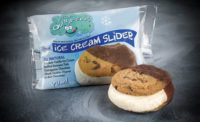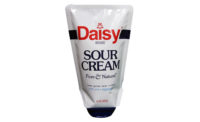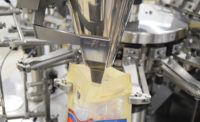Sustainable packaging materials reduce package weight, contain content from renewable or recycled sources and/or recycle easily.
Since lighter packages also cost less to ship, many brand owners are exploring the possibility of transitioning from rigid packaging to flexible packaging. This trend appears to be strongest for products like yogurt or cottage cheese where there’s been some shift away from cups to pouches.
However, cup packaging is losing weight and ticking the renewable and recyclable boxes, too. Packaging from a European supplier consists of a paperboard wrap and plastic cup. Siggi’s yogurt from the Icelandic Milk and Skyr Corp., New York, is using a package based on K3 technology developed by Greiner Packaging International of Sattledt, Austria.
The paperboard feels good to the touch, insulates fingers from hot or cold contents, offers a surface suitable for high-quality printing on both sides and can be designed with windows or other features. Attention-grabbing effects can be imparted by foil lamination, embossing and hot-stamping. A perforated zip strip makes it easy to separate the wrap from the cup for recycling. The microwaveable and freezer-compatible dual-material package can be configured with barrier properties. Available in Europe for several decades, it is now produced in the United States at Greiner Packaging’s two-year-old operation in Pennsylvania.
The dual-material structure offers environmental advantages. Since the paperboard supplies rigidity and stability, the plastic cup, which can be round or nonround, can be lightweighted up to 50%. In some cases, a renewable bioplastic such as polylactic acid can be specified. Less plastic means lower carbon dioxide emissions during production. The paperboard is not only derived from a renewable source (wood fiber), but also can contain recycled content. In addition, it completely blocks light transmission, which could degrade the product.
A better bottle
Sustainability improvements also can be seen in cartons for fluid milk products. Composed primarily of paperboard, renewable content is high, and it’s possible to produce plastic portions of the package from renewable feedstocks. Tetra Pak Inc., Denton, Texas, supplies several renewable packages including the bio-based Tetra Top carton bottle and the Gable Top Bio-based carton, a U.S. version of the Tetra Rex Bio-based carton, introduced in January 2015 in Europe.
The Gable Top Bio-based carton consists solely of plant-based materials. Paperboard and plastics ae derived from sugarcane. The carton is designed to be a drop-in replacement on existing gable top filling lines.
Tetra Pak President and CEO Carmen Becker said “We believe that increasing the renewable content of our packages is not only good for the environment, but also offers our customers a competitive advantage.” Tetra Pak forecasts its global annual volume of fully renewable packages will reach 100 million in 2016.
Cartons are not only renewable, but easily recycled by a growing segment of the U.S. population. According to the Carton Council, Denton, Texas, 58% of U.S. households have access to carton recycling; in 2009 only 18% could recycle cartons in their local programs.




